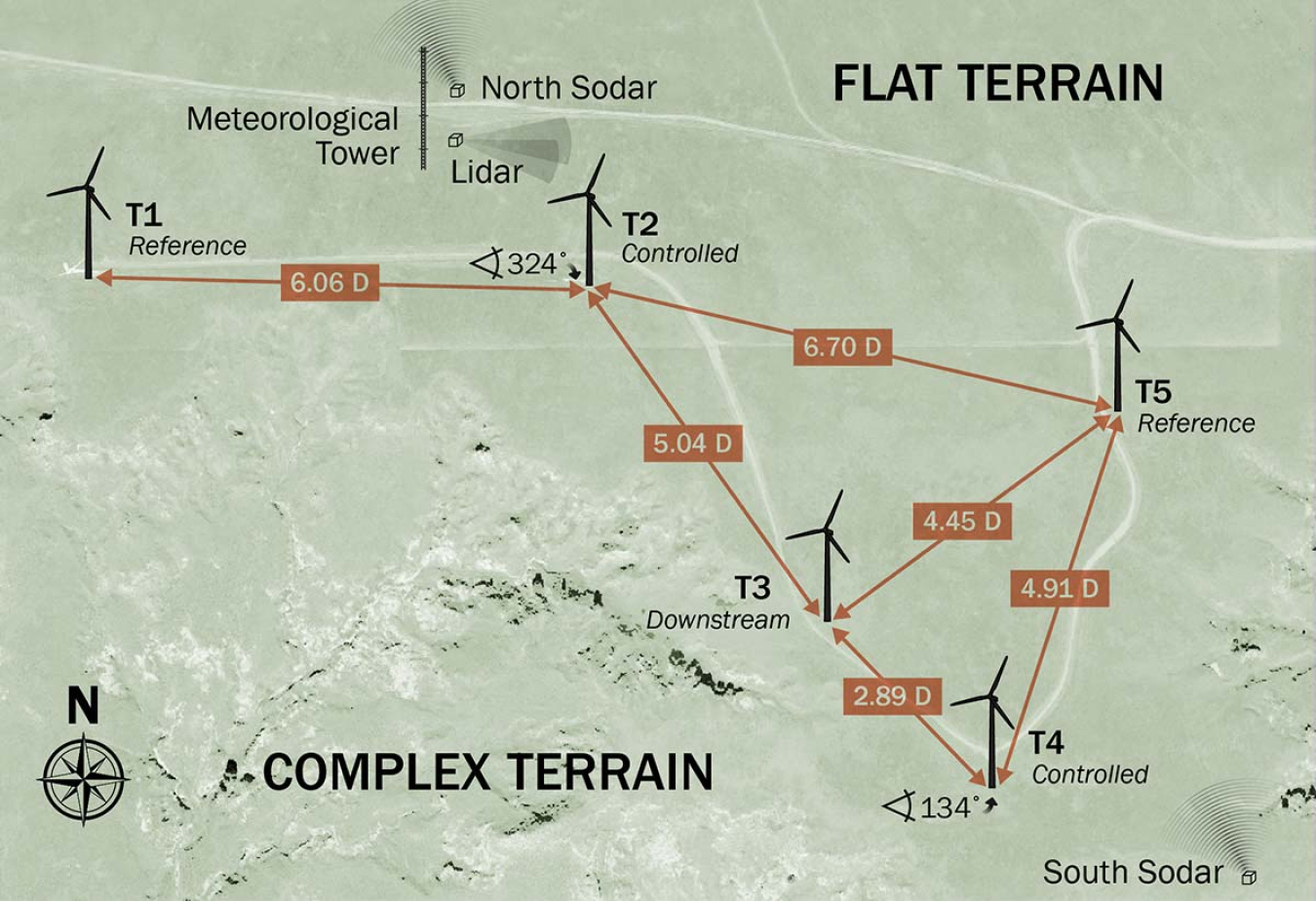Wake steering field trials reveal potential for wind-plant-level control to increase annual energy production 1%–2% and profits by $1 million.
Wind Energy Technologies Office
May 20, 2019Initial wind plant control field trials validate increased power production, revenue potential
Commercial field trials led by the National Renewable Energy Laboratory (NREL) are providing insight into the benefits of wind power plant control. In partnership with NextEra Energy and the University of Colorado Boulder, NREL measured the impacts of wake steering on a subsection of a commercial wind plant. The field trials were consistent with simulated predictions, which suggest that annual energy production gains of 1%–2% are achievable for existing facilities implementing wind-plant-level controls.
Efficiency improvements associated with wake steering can increase annual profits by as much as $1 million, depending on the plant size and design,” said Paul Fleming, an NREL researcher and the project’s principal investigator. “These data unlock a different level of confidence for developers who are estimating how much energy a new facility can produce.”
With funding from DOE’s Atmosphere to Electrons initiative and Technology Commercialization Fund, NREL and NextEra brought increased clarity to wind plant control research by deploying a range of sensing equipment for the field trial, including a ground-based lidar, meteorological tower, and two sodars. The resulting data allowed researchers to compare actual energy production gains with predicted FLOw Redirection and Induction in Steady State (FLORIS) models. The findings from the field trial are published in Wind Energy Science.
“A successful field trial leads to next steps,” said Fleming. “Now we see how atmospheric conditions impact the effectiveness of wake steering, so we can incorporate that into next-generation control modeling.”

NREL measured the impact of steering individual turbine wakes away from downstream turbines at NextEra Energy Resource’s Peetz Table Wind Energy Center. Figure by Paul Fleming, NREL
NREL’s experimental design for the NextEra field campaign incorporated lidar measurements of atmospheric conditions. Photo by Andrew Scholbrock, NREL
NREL provides a suite of open-source tools that perform optimizations of turbine interactions. Models such as the Simulator for Wind Farm Applications, FLORIS, developed with Delft University of Technology, and Wind Plant Integrated Systems Design and Engineering Model (WISDEM®) allow academics, investors, wind developers, and manufacturers to implement control scenarios.
The recent wake steering field validation campaign with NextEra identified several pathways for refining controller designs. In fact, the report authors state that the results, given these opportunities for improvement of performance, might “represent a worst-case baseline for the possibility of gains from wake steering.” Given that a 2% gain at a typical 300-megawatt (MW) wind plant could represent $1 million per year in additional profits, it’s no surprise that the industry is expressing widespread interest in implementing optimized controls.
As a next step, NREL Senior Researcher Jennifer King is leading development of a more accurate set of wake models based on these findings, which will be released as the fourth iteration of FLORIS. NREL plans to release additional open-source tools and make their recommended methods for controller design, optimization, analysis, and visualization widely available to the industry in the future.
“We have been able to learn by doing with NextEra and several other companies, and the final phase is giving everyone the ability to implement a dynamic controller,” said Fleming. “Then we’ve come one step closer to realizing DOE’s efficiency and cost goals.”

